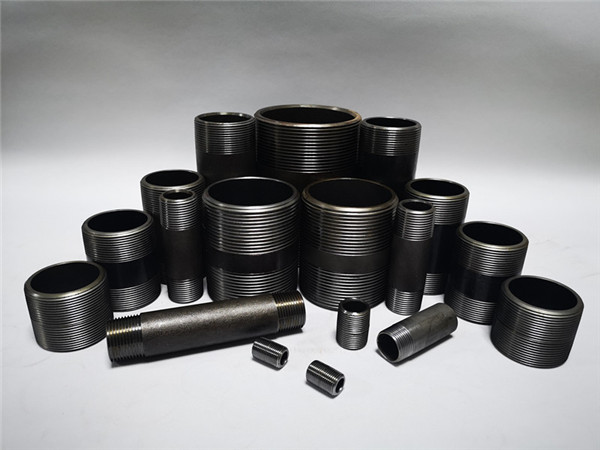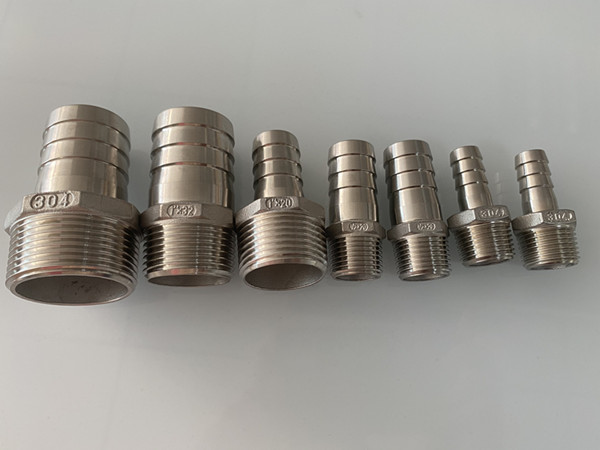A threaded nipple is a connecting tool between pipes and a connection point between components and pipes that can be disassembled. It plays an indispensable role in the pipe fitting, and it is one of the two main components of the hydraulic pipeline. The connection form of pipe nipple includes socket welding or threaded connection. It is mainly used for small-diameter low-pressure pipeline, which is often installed and disassembled, or as the final adjustment of the pipeline with threaded pipe fittings. The structure form should adopt the metal surface contact sealing structure, which is usually used to transport water, oil, air, etc. In general, malleable cast iron is used for the pipeline. In addition, the user requirements and prices are also factors to be considered in selection.
There are many kinds of pipe nipples, and commonly used pipe nipples can be divided into two types: hard pipe nipples and hose nipples.
In the hydraulic system, the connection mode of the pipe and the pipe nipple is also different. The screw-in end of the pipe adopts the connection thread. Taper thread is mainly used in the middle and low-pressure hydraulic system because of its own vertebral body tightening and sealing operation with polytetrafluoroethylene and other materials. The sealing effect of the fine thread is very good, and it is often used in a high-pressure system, but it needs to use a combination washer or O-ring to seal the end face, and sometimes red copper washer is also used. It is more suitable for connecting pipes with thick walls. Its components mainly include nipple body, connecting pipe, and nut. In use, the nipple body is embedded in the target, and the end face is sealed with the gasket mentioned above. The rubber seal is used between the nipple body and the connecting pipe, and sometimes the spherical seal is also used.
Since the pipe nipple is a detachable connecting element, it must meet the requirements of stable connection, strong sealing, reasonable size, small pressure loss, good process performance, etc., as well as the requirements of convenient disassembly and assembly. Therefore, do not look down on those small pipe nipples, because only their existence can support the existence of the entire hydraulic system.
The industrial screw nipples are generally made of metal, with high-pressure resistance. The materials are carbon steel, stainless steel, alloy steel, brass, etc.; the screw nipples used in life are generally made of PC, PVC, PE, PPR, etc.
DIN2999/NPT/BSPT/GOST THREAD PIPE NIPPLE
Main Features:
1. High strength of screw joint: According to the principle of cold work hardening of steel, the strength of the straight thread rolled on the steel bar is greatly improved, so that the tensile strength of the straight thread joint is higher than the tensile strength of the base material of the steel bar.
2. Stable performance: The joint process is not affected by the quality of workers, so the performance is stable.
3. Fast connection speed: Because it adopts off-site prefabrication and on-site assembly and connection, the steel bars with prefabricated wire ends can be prefabricated and stored in large quantities in the steel bar storage yard. When the construction period is tight, just add assembly workers at the construction site.
4. Wide range of applications: There are basically no restrictions on the application range, and it is more suitable for bending steel bars, fixed steel bars, steel cages, and other platforms where the steel bars cannot rotate.
5. Easy to manage: the screw joint will not appear the phenomenon of sleeve and steel mismatch, and the inspection is more convenient. The operation is simple, ordinary workers can become skilled workers after a few hours of study.
6. Significant economic and social benefits: shorten the construction period, improve the quality of the project, reduce energy consumption, help environmental protection, reduce equipment investment, lower additional costs, and have obvious economic and social benefits.
7. Low labor intensity: only one step is needed to process a thread head on a dedicated thread rolling machine.















